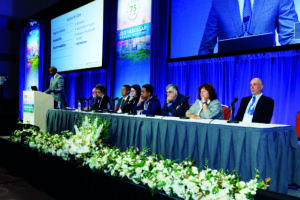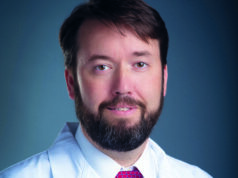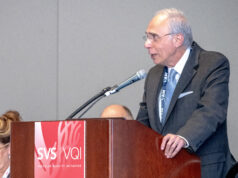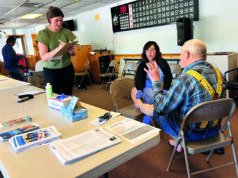
An absence of patient trust in their doctors and hospital systems yesterday morning emerged as a key talking point amid a comprehensive deep dive into some of the problems vascular surgeons tackle in their efforts to broaden access to quality vascular care.
A panel of experts assembled by Society for Vascular Surgery (SVS) President-elect Michael Dalsing, MD, for the 2022 E. Stanley Crawford Critical Issues Forum at the Vascular Annual Meeting in Boston—“Quality Vascular Surgery Care for All—An Aspirational Goal of Merit”—were probing some of the key impediments to universal access across the United States, covering such challenges as workforce numbers and distribution, rural isolation, urban care deserts, access to insurance, and diversity and inclusion.
A question from the audience that came after the panel had each delivered a presentation on an aspect of the access hurdles—posed by Mahmoud B. Malas, MD, chief of vascular and endovascular surgery at the University of California Davis—raised the specter of the level of trust patients place in their providers based on the care they had received in the past.
Part of the problem is transportation, Malas said, but trust, he insisted, figures greatly in the conundrum.
“When we were trying to understand why a majority of African Americans were getting PTFE grafts instead of vein, even though they have good veins, or that they were getting a catheter a lot more to start their dialysis than fistulas, we didn’t really understand what was going on until we started interviewing patients,” he said. He was referring to a study of all U.S. dialysis patients that he was involved in while based at Johns Hopkins Hospital that looked at racial disparities.
“Every single patient said I don’t trust Hopkins, doctors, or hospitals. There is a lot of concern that they have no trust in us as doctors, hospitals and providers, because they had had a historically bad outcome, and had no trust in the hospital system.”
Samantha Minc, MD, who had delivered a talk looking at the issues surrounding access to care in rural America, said Malas’ example was “an exact reason why mixed methods research is going to be the way for us to understand these issues related to disparities.”
“We’ve done a really great job quantifying it. We know that these things exist. We have the numbers. But we don’t know why,” continued the assistant professor of vascular surgery at West Virginia University in Morgantown, West Virginia. “Doing that qualitative aspect really provides this amazing synergy where we figure out the question and we can also start finding answers.”
Community engagement and reversing lack of trust, said Andrew Gonzalez, MD, assistant professor of vascular surgery at Indiana University School of Medicine in Indianapolis, are dimensions that build through the development of long-term partnerships.
He described how his mother was a pediatric hematology oncologist in the 1960s and would brave her urban setting, blighted by drug problems of the time, to give out childhood vaccinations. That was realistic back then as it was a practice incentivized by the county hospital. “But I think most of us, if we announced to our division chief, that we had a plan to get the doppler and roll through the ’hood checking ABIs [ankle-brachial indices], we would probably be laughed out of the room. It’s just not incentivized anymore, and there is no way to really do that.”
Gonzalez, who in his talk laid out the access problem in “urban vascular care deserts,” emphasized “the need to think of multilevel, multilateral interventions—and we probably need to do this by partnering.”
One of the ways in which this can be achieved, he said, is through financial incentives being aligned for both hospitals and government entities.
“It is also important we have a role in being seen in the community. It is not just some place you jump into when it’s time to sign people up for your study. It is a place where you have to have been previously embedded. That is important to have overall success.”
Minc, meanwhile, suggested that should a way be found to make transportation grant feasible “a lot of communities are going to benefit.”
Her work right now, she said, is focused on community engagement. “As vascular surgeons, what a community is to us may differ a little bit.” Primary care providers (PCPs), Minc pointed out, represent a community with which to partner. “In rural areas, especially where we are, very isolated areas, these PCPs do everything. They are very independent. They multitask. They come to me and say, ‘Just show us how to do the wound care and we’ll do it.’”
Vincent Rowe, MD, whose topic covered the intersection between diversity and inclusion, and access, said the problems Minc reported concerning rural communities were also prevalent in the urban setting of Los Angeles.
For his part, in his opening remarks, incoming SVS President Dalsing posed the overarching question behind the forum topic: “Where are we now? Do we have enough vascular surgeons? Are they in the right place?”
Data shows there won’t be enough overall, “at least in 2025,” he said
“We know that there is a major distribution issue in terms of where vascular surgeons are and where the disease is and where the patient is.” In terms of both rural and urban America, neither is homogenous, he added.
“We know something about the problem; I’m not sure we know about the solutions; and I think we may not know what we don’t know.












